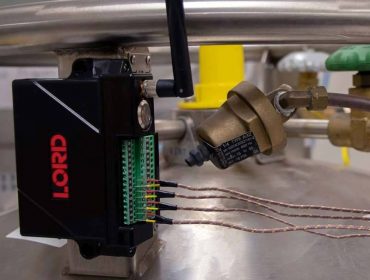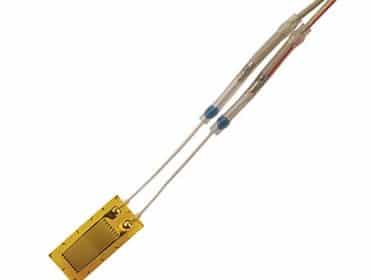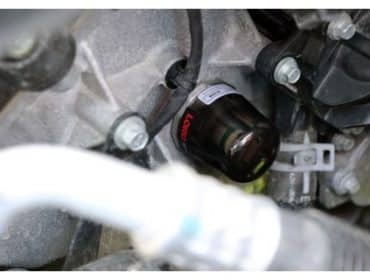CONDITION MONITORING AND PREVENTATIVE MAINTENANCE SERVICES
Condition monitoring is essential for assessing the health of your mechanical assets and identifying early signs of wear, fatigue, and potential failure. By leveraging advanced diagnostic techniques, we enable your machinery to operate more efficiently, safely, and with lower maintenance costs over time.
What is Condition Monitoring?
Condition monitoring is a proactive approach to equipment maintenance that involves tracking specific parameters within machinery to detect anomalies before they lead to costly breakdowns. Through regular monitoring and analysis, we identify potential issues early and recommend corrective actions that prevent unplanned downtime and expensive repairs.
Common techniques used in condition monitoring include:
-
Vibration Analysis
Vibration analysis is one of the most reliable methods for detecting early signs of mechanical issues, such as imbalance, misalignment, and bearing faults. By analysing vibration patterns, we can assess the condition of rotating parts, identify potential issues, and take preventive measures to avoid failures. -
Thermography (Infrared Analysis)
Thermographic imaging, or infrared analysis, detects heat patterns and hot spots in machinery components. Excessive heat can indicate issues like misalignment, poor lubrication, or worn parts. With thermography, we can catch thermal anomalies early, preventing overheating and damage. -
Oil Analysis
Monitoring the condition of lubricants in machinery is crucial for detecting contaminants, metal particles, and signs of wear. Oil analysis helps us understand the internal health of components and take action before minor issues escalate. -
Ultrasonic Testing
Ultrasonic testing detects high-frequency sound waves emitted by friction, leaks, or electrical issues. It’s especially useful for detecting leaks in compressed air systems, as well as identifying electrical faults in equipment.
Fault Finding Services
Fault finding is the systematic process of diagnosing problems in machinery and pinpointing the underlying causes. At London Machine Works, our engineers use cutting-edge diagnostic tools and software to conduct thorough fault-finding investigations, ensuring accurate identification of issues.
Our fault-finding process includes:
-
Data Collection
We start by gathering data on the machinery’s performance, using various monitoring tools to analyse vibration, temperature, noise, and other indicators. This data provides a comprehensive view of the machinery’s current state. -
Analysis and Diagnosis
Our experts analyse the collected data to detect irregularities and patterns that may indicate a fault. By correlating these indicators with common failure modes, we can accurately diagnose problems, from worn bearings to misaligned shafts. -
Root Cause Analysis
Beyond identifying symptoms, we perform root cause analysis to determine the underlying factors causing the fault. This ensures we don’t just address the surface issue but prevent the fault from recurring in the future. -
Corrective Action Planning
Once we’ve identified the fault, we recommend corrective actions to restore machinery performance, whether through repair, part replacement, or adjustment of operating parameters.
Preventative Maintenance
Preventative maintenance is the key to maximizing machinery lifespan and avoiding unexpected failures. At London Machine Works, we create tailored preventative maintenance programs for each client based on their equipment’s unique needs and operating conditions.
Our preventative maintenance services include:
-
Regular Inspections
We schedule regular inspections of your machinery to catch signs of wear and tear before they escalate. This involves checking for signs of vibration, loose components, misalignment, and lubrication issues. -
Scheduled Maintenance Intervals
Based on equipment usage and condition monitoring data, we set maintenance intervals optimized for each machine. This can involve tasks like changing oil, replacing worn parts, and adjusting alignment. -
Parts Replacement and Lubrication
Certain components have predictable lifespans and need regular replacement or lubrication to maintain efficiency. By proactively replacing or lubricating these parts, we help extend equipment life and reduce wear. -
Data-Driven Maintenance Decisions
Condition monitoring provides us with valuable data, allowing us to move beyond traditional time-based maintenance and adopt a more predictive approach. By acting on real-time information, we make maintenance decisions that reduce waste and increase equipment uptime.
Benefits of Condition Monitoring and Preventative Maintenance
Implementing condition monitoring and preventative maintenance offers numerous benefits, including:
-
Reduced Downtime
Identifying potential faults early and conducting timely maintenance minimizes the likelihood of unexpected failures, keeping your machinery operational when you need it most. -
Lower Maintenance Costs
Preventative maintenance is more cost-effective than reactive repairs, reducing the need for emergency call-outs and costly replacements. -
Extended Machinery Lifespan
Regular monitoring and maintenance help your equipment run at peak efficiency and avoid premature wear, maximizing the return on your investment. -
Increased Safety
Faults in machinery can pose safety risks. By identifying and addressing issues proactively, we help maintain a safe working environment for your team.
If you’re ready to improve your equipment’s reliability and efficiency, reach out to London Machine Works today. Our team will help you develop a customized condition monitoring and maintenance plan that protects your investment and supports uninterrupted operations. Let us help you prevent costly downtime and enhance productivity with our expert services.






